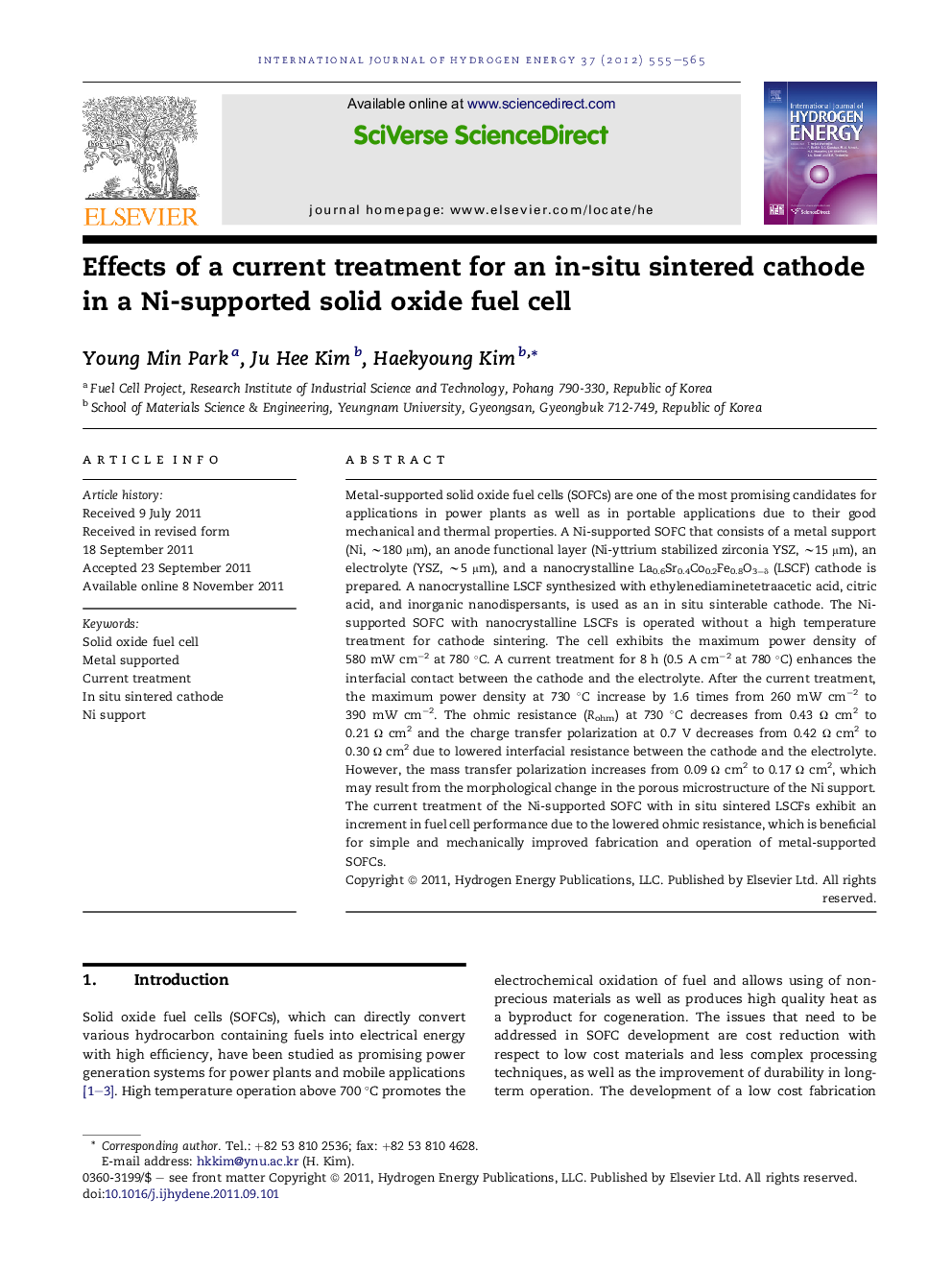| Article ID | Journal | Published Year | Pages | File Type |
|---|---|---|---|---|
| 1277169 | International Journal of Hydrogen Energy | 2012 | 11 Pages |
Metal-supported solid oxide fuel cells (SOFCs) are one of the most promising candidates for applications in power plants as well as in portable applications due to their good mechanical and thermal properties. A Ni-supported SOFC that consists of a metal support (Ni, ∼180 μm), an anode functional layer (Ni-yttrium stabilized zirconia YSZ, ∼15 μm), an electrolyte (YSZ, ∼5 μm), and a nanocrystalline La0.6Sr0.4Co0.2Fe0.8O3−δ (LSCF) cathode is prepared. A nanocrystalline LSCF synthesized with ethylenediaminetetraacetic acid, citric acid, and inorganic nanodispersants, is used as an in situ sinterable cathode. The Ni-supported SOFC with nanocrystalline LSCFs is operated without a high temperature treatment for cathode sintering. The cell exhibits the maximum power density of 580 mW cm−2 at 780 °C. A current treatment for 8 h (0.5 A cm−2 at 780 °C) enhances the interfacial contact between the cathode and the electrolyte. After the current treatment, the maximum power density at 730 °C increase by 1.6 times from 260 mW cm−2 to 390 mW cm−2. The ohmic resistance (Rohm) at 730 °C decreases from 0.43 Ω cm2 to 0.21 Ω cm2 and the charge transfer polarization at 0.7 V decreases from 0.42 Ω cm2 to 0.30 Ω cm2 due to lowered interfacial resistance between the cathode and the electrolyte. However, the mass transfer polarization increases from 0.09 Ω cm2 to 0.17 Ω cm2, which may result from the morphological change in the porous microstructure of the Ni support. The current treatment of the Ni-supported SOFC with in situ sintered LSCFs exhibit an increment in fuel cell performance due to the lowered ohmic resistance, which is beneficial for simple and mechanically improved fabrication and operation of metal-supported SOFCs.
► Ni-supported SOFC is characterized with an in-situ sintered nanocrystalline LSCF. ► A current treatment of 0.5 A cm−2 exhibits an increment in fuel cell performance. ► A maximum power density at 730 °C increase from 0.26 W cm−2 to 0.39 W cm−2. ► Ohmic & charge transfer polarization decreases from lowered interfacial resistance.
